Aki, Japan Navy’s newest Ocean Suveillance Ship delivered to the Navy by Mitsui E & S Shipbuilding on March 4, 2021.
During the ceremony JMSDF flag hoisted and the ship commissioned. The flag of the Maritime Self-Defense Ship was awarded by the Kure District Chief to the captain of the ship, Mr. Mamiya, and the ship officially became a ship of the Self-Defense Forces.
After the ceremony ship transited to its main base Kure. Ship will serve under the Ocean Surveillance Division 1.






Js Aki
JS Aki (AOS-5203) is a Hibiki-class ocean surveillance ship of Japan Maritime Self-Defense Force. She was laid down in March 2019 and it was launched on 04 Feb 2020.
Aki is an ocean surveillance ship and designed to detect the acoustic data of the submarines. The vessel have an AN/UQQ-2 Surveillance Towed Array Sensor System (SURTASS), which is installed by United States. Data from the sensors is relayed through the Defense Satellite Communications System, and processed and shared with the United States. The data is fed into the Integrated Undersea Surveillance System.
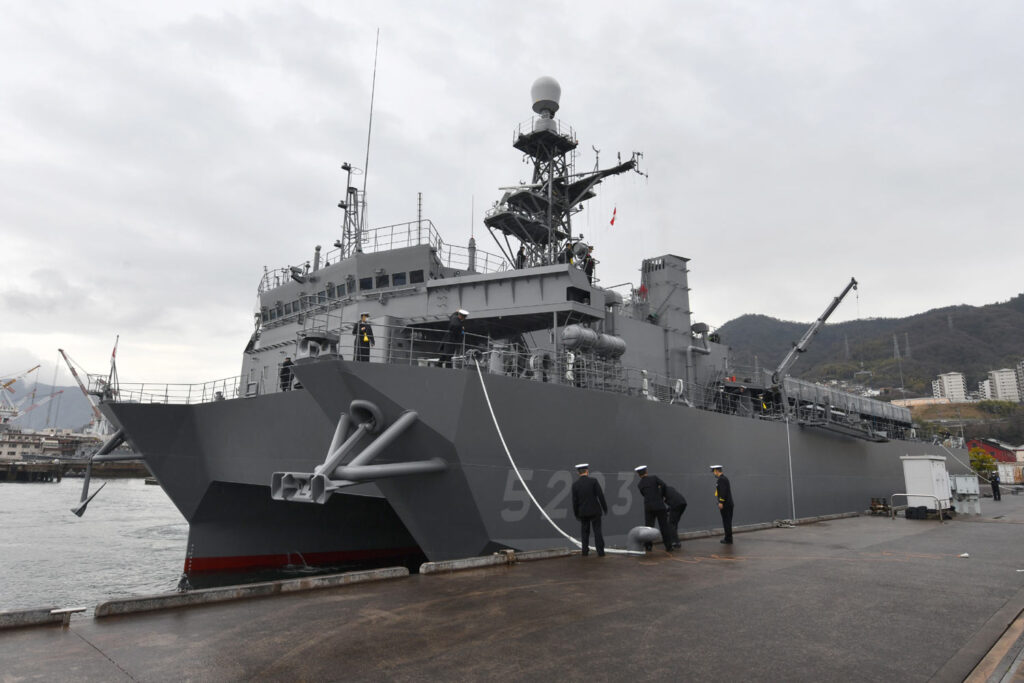
General Characteristics
| Displacement: | 2,850–3,800 long tons (2,896–3,861 t) full load |
| Length: | 67.0 m (219.8 ft) |
| Beam: | 29.9 m (98 ft) |
| Draft: | 7.5 m (25 ft) |
| Speed: | 11 knots (20 km/h; 13 mph) |
| Complement: | 40 |
| Sensors and processing systems: |
OPS-16 OPS-9 |
| Sonar | AN / UQQ-2 |
Surveillance Towed Array Sensor System (SURTASS)
SURTASS/CLFA is a low-frequency, passive and active, an acoustic surveillance system that provides passive detection of quiet nuclear and diesel submarines and enables real-time reporting of surveillance information to Anti-Submarine Warfare (ASW) commanders.
The system has both passive and active components. The passive part of the system is called SURTASS. It consists of a long array of hydrophones to listen for underwater sounds, particularly submarines. When the submarine is too quiet to be heard by SURTASS, LFA sonar is employed. LFA is a set of acoustic transmitters suspended on a cable beneath a ship. These transmitters produce sound between 100 and 500 Hz with a source-level of approximately 215 underwater dB at 1 meter. The combined system has an effective source level from 230 to 240 underwater dB at 1 meter. These sound pulses reflect off submerged objects and are heard on SURTASS. Using sounds with this intensity and frequency allows for a long detection range. The objective of this system is to locate submarines far enough away so that they are not within firing range of the ship or any other ships it may be protecting.
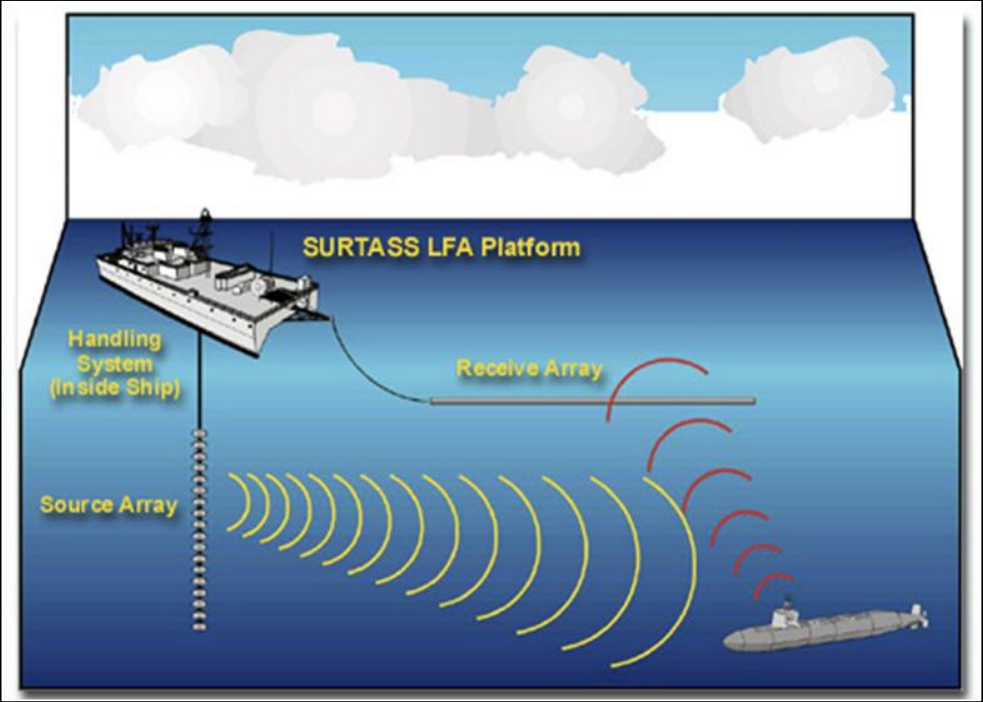
Related Documents (Click on the Image)
Check out Naval Library App to find out the specifications of Hibiki Class Ocean Surveillance Ships and SURTASS.

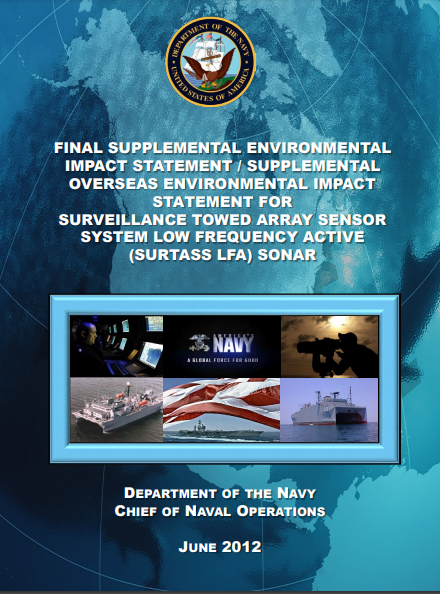
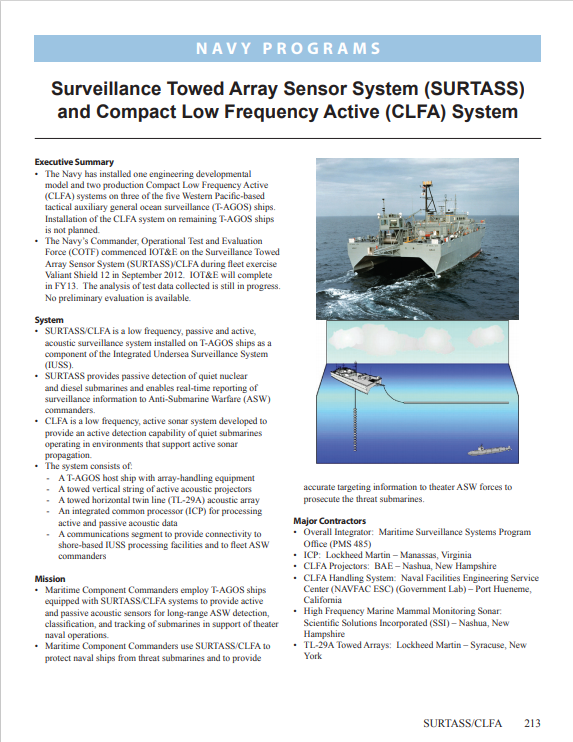
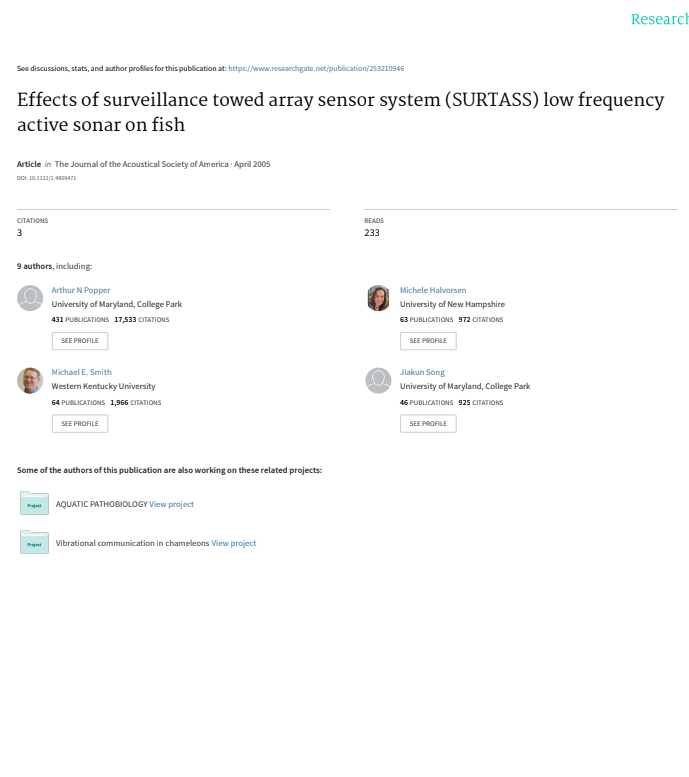












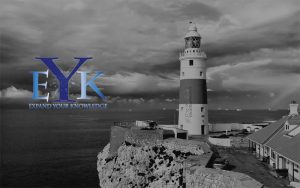



Comments